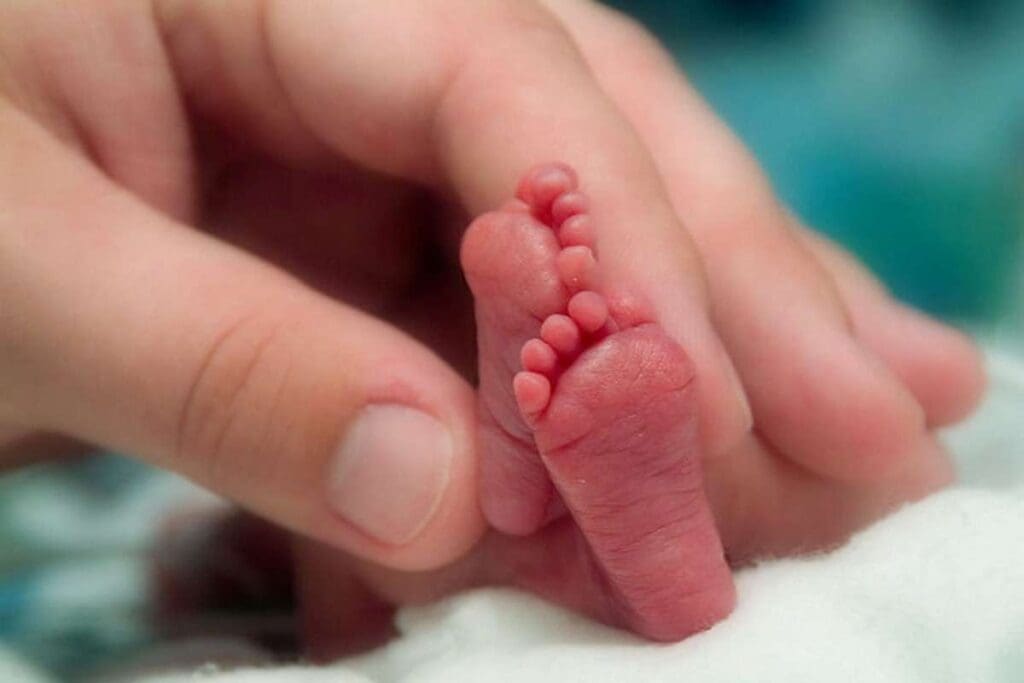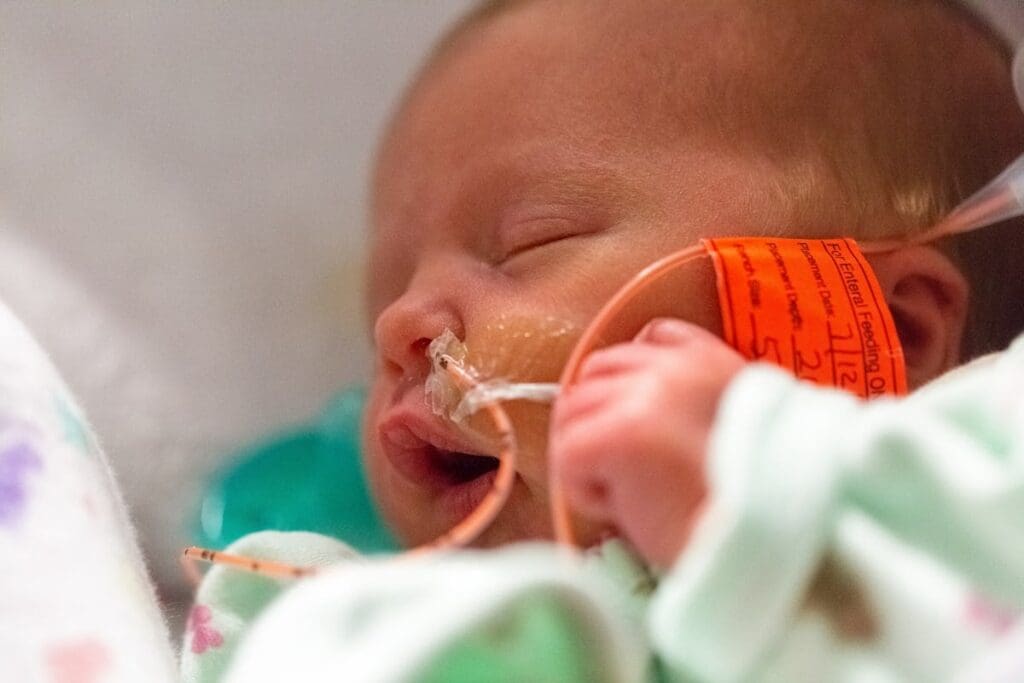Last Updated on November 24, 2025 by
Congenital anomalies are a big problem worldwide. They affect millions of babies and their families every year. It’s estimated that 6% of babies globally are born with these conditions. This means there are huge healthcare challenges.

In the United States, the CDC says about 1 in every 33 babies is born with congenital anomalies each year. Knowing how common and what types of congenital anomalies are is key. It helps us find better ways to prevent and treat them.Learn about the most popular birth defects and understand the latest statistics. Get amazing facts on how often these conditions occur globally.
Congenital anomalies are a big problem in births around the world. In 2021, nearly 31.64 million kids aged 0–14 had these birth defects. This shows we need more research and better healthcare.

About 6% of all births have congenital anomalies. This means a lot of kids are affected every year. A health report says, “Congenital anomalies cause many deaths and disabilities.” This highlights why we must focus on these issues.
Where you live can affect whether you’re born with a congenital anomaly. The CDC says the rate of major anomalies varies. It depends on the condition and where you are. Things like genetics and healthcare access play a big role.
In places with less healthcare, more cases might go unnoticed or misdiagnosed.
Looking back, we see a mix of good and bad news. Medical progress has helped diagnose and treat more cases. Yet, the number of kids with these anomalies has gone up slightly. This is due to better reporting and changes in our environment and lifestyle.
It’s key to keep watching these trends and adjust our healthcare plans.
By learning more about congenital anomalies, we can tackle these challenges. This way, we can lessen their effect on people and communities everywhere.
It’s important for doctors and parents to understand congenital anomalies. These are birth defects that can affect how a baby is born. They can be structural, functional, or metabolic.
Many things can cause these anomalies. This includes genetic mutations, environmental factors, and health issues in the mother. We’ll look at the different types and what causes them.
Congenital anomalies happen during fetal development. They can affect the body’s structure or function. Doctors use systems like the International Classification of Diseases (ICD) to classify them.
These classifications help us understand how common these anomalies are. They also help us find ways to prevent and treat them.
There are two main types of congenital anomalies. Structural anomalies affect the body’s physical structure. Examples include heart defects and cleft lip and palate.
Functional anomalies affect the body’s systems or organs. This includes metabolic disorders and genetic conditions.

Metabolic and genetic disorders are big categories of congenital anomalies. They often come from genetic mutations or inherited traits. Knowing the genetic basis is key for diagnosis and treatment.
Some common examples include:
By understanding congenital anomalies, we can work to reduce their occurrence. This helps improve outcomes for those affected.
We look at the most common birth defects and how they affect families. Birth defects happen during pregnancy and can be structural or functional. Knowing about these defects helps us find better ways to treat and support them.
Congenital heart defects are the most common, happening in 1 in 100 births, says the CDC. They affect the heart’s structure and function, leading to serious health issues. Early detection and treatment have greatly improved outcomes for babies.
Down syndrome is a genetic disorder from an extra chromosome 21. It happens in about 1 in 700 births. It’s linked to intellectual disability, delayed speech, and unique physical traits. Medical care and educational support have made life better for those with Down syndrome.
Cleft lip and palate are common, happening in 1 in 1,600 births. They affect the lip and/or palate, causing feeding and speech issues. Surgery and team care can greatly improve results.
Spina bifida is a neural tube defect in 1 in 2,500 births. It’s when the spine doesn’t close fully, leading to neurological and mobility problems. Prenatal diagnosis and postnatal care can manage the condition and improve life quality.
It’s key for healthcare providers, families, and support systems to understand these common birth defects. By knowing about them, we can tailor our care to meet the needs of those affected and their families.
Exploring birth defects shows us that many risk factors play a big role. Knowing these risks helps parents and doctors prevent and make smart choices.
Genetics is a big part of birth defect risks. Genetic counseling can spot risks, like in families with genetic disorders. Knowing your genetic risk helps plan your family.
Maternal age is key, too. Women over 35 face higher risks of chromosomal issues, like Down syndrome. Prenatal care and tests are key for older moms.
Pregnancy infections can harm the fetus. Rubella and syphilis, for example, can cause birth defects if not treated. Good prenatal care and a healthy lifestyle are important.
Exposure to harmful substances can harm the fetus. Alcohol and tobacco use during pregnancy increases risks. Expectant moms should avoid these and keep their environment safe.
Spotting birth defect signs in pregnancy is hard, but knowing risks helps. Understanding these risks helps us all work to lower them.
By tackling these risks, we can better prenatal care and outcomes. It’s a team effort involving doctors, parents, and the community for healthy pregnancies.
We now have many ways to find congenital anomalies, from prenatal tests to postnatal checks. The Centers for Disease Control and Prevention (CDC) suggests using ultrasounds and blood tests during pregnancy. These steps help find fetal abnormalities early, leading to better care and choices.
In the first trimester, there are several tests to spot congenital anomalies. These include:
These tests can spot risks and give parents-to-be important info about their pregnancy.
In the second trimester, more detailed tests can find congenital anomalies. These include:
These tests give a clearer diagnosis and help doctors plan for the rest of the pregnancy.
After birth, a detailed check-up and medical history can spot congenital anomalies. More tests, like imaging and genetic tests, might be needed to confirm a diagnosis. Examples of fetal abnormalities found after birth include heart defects and genetic disorders.
Finding and diagnosing congenital anomalies early is key to the right care and support. Knowing about these methods helps improve lives and outcomes for those affected.
To prevent congenital anomalies, a multi-step approach is key. This includes improving health before pregnancy, taking prenatal vitamins, and avoiding harmful substances. These steps help lower the chance of genetic defects in pregnancy and embryonic abnormalities.
Before getting pregnant, it’s vital to be in good health. This means managing any ongoing health issues, keeping a healthy weight, and checking if medications are safe. Women should talk to their doctor to get their health in check before pregnancy.
The CDC stresses the need for folic acid to prevent neural tube defects. Iron, calcium, and omega-3 fatty acids are also key. A balanced diet and prenatal vitamins offer the nutrients needed for a healthy pregnancy.
It’s important to stay away from substances that can harm a developing baby. This includes certain medicines, alcohol, tobacco, and pollutants. Pregnant women should know these risks and limit their exposure to prevent birth defects.
For families with a history of genetic issues, genetic counseling is helpful. Counselors can assess the risk of passing on conditions and offer guidance. They help families understand their options for future pregnancies.
By following these prevention steps, families can lower the risk of birth defects. We urge expectant parents to work with their healthcare providers to create a plan for a healthy pregnancy.
Congenital anomalies are a big problem worldwide, touching families everywhere. By learning about these issues, we can find better ways to prevent and treat them. This helps babies and their families a lot.
At Liv Hospital, we aim to give top-notch care to everyone. We help families dealing with congenital issues, like fetal deformities. Together, we can offer the support needed.
We focus on keeping families healthy before and during pregnancy. This includes taking the right vitamins and avoiding harmful substances. Our team is here to give personalized care and support. We want the best for every family.
Congenital anomalies, or birth defects, are issues that happen during fetal development. They often occur before the baby is born.
About 6% of births worldwide have congenital anomalies. The rate can change a lot in different places and groups.
Common ones include heart defects, Down syndrome, cleft lip and palate, and spina bifida.
Risks include genetic issues, older age of the mother, infections, and exposure to harmful substances.
Doctors use ultrasound and blood tests during pregnancy. After birth, they do more tests to find out.
Not all can be prevented, but good health before pregnancy and avoiding harmful substances can help.
Genetic counseling helps find families at high risk. It offers advice to lower the chance of birth defects.
Parents can keep their baby healthy by eating well, avoiding harmful substances, and following prenatal care.
The risk is about 6%, but it can change based on many factors.
Yes, many can be found during pregnancy. This helps parents prepare for their baby’s needs after birth.
Subscribe to our e-newsletter to stay informed about the latest innovations in the world of health and exclusive offers!